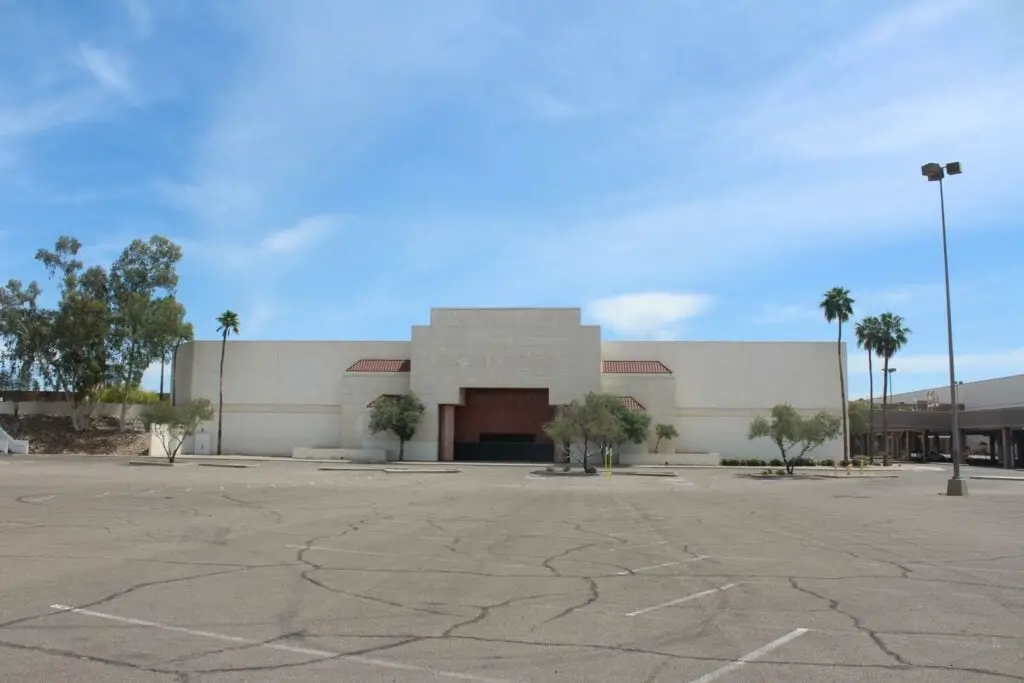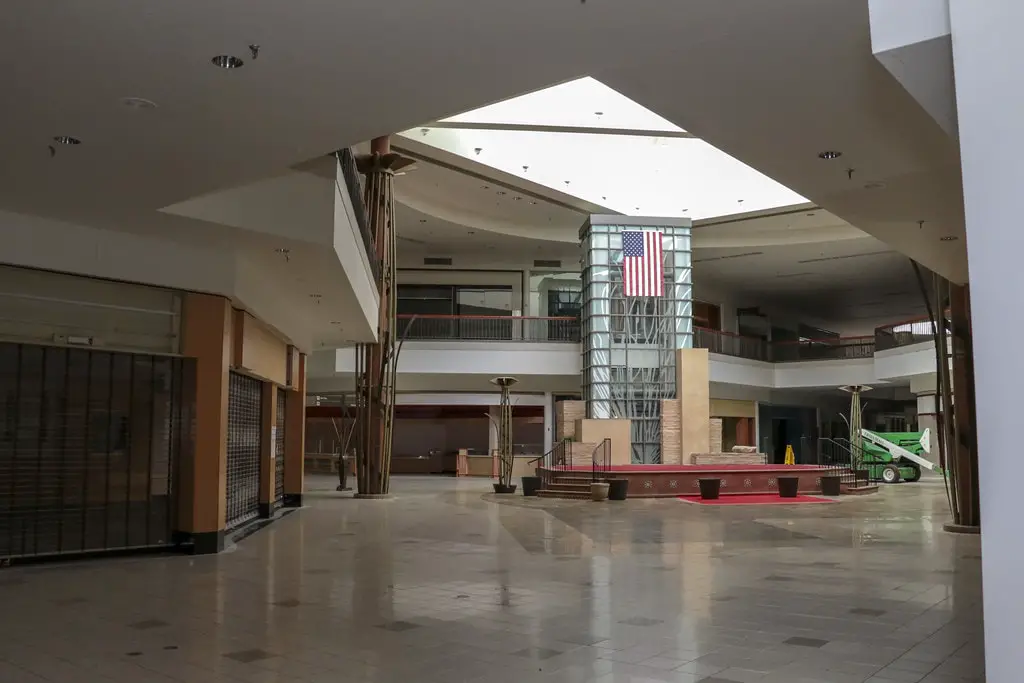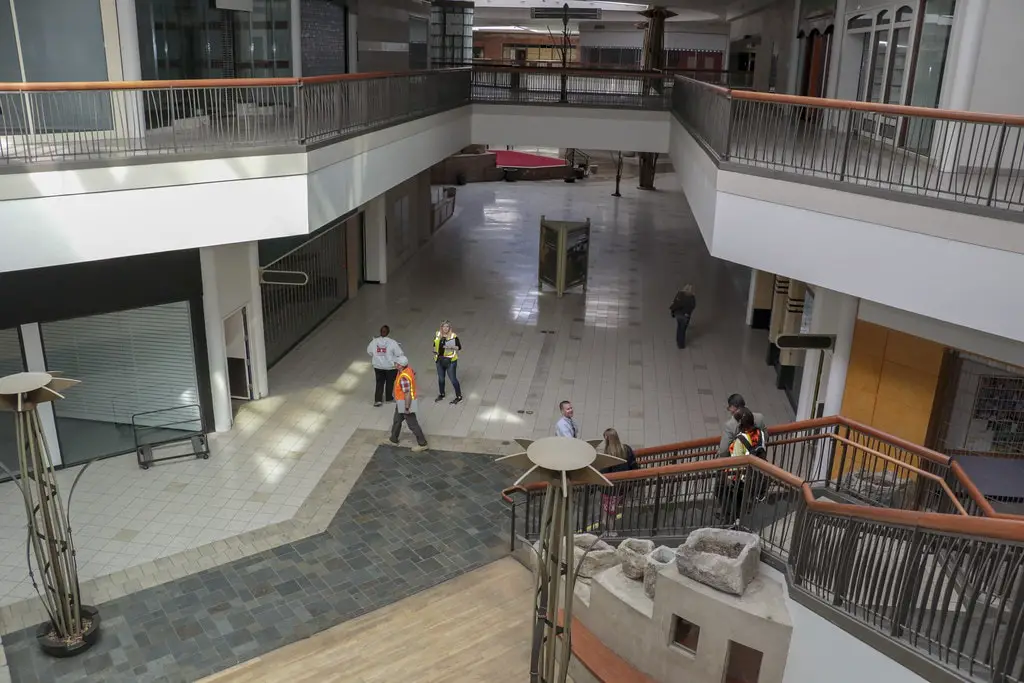The Mall That Knew the Whole East Valley
For decades, Fiesta Mall sat at the heart of Mesa like it belonged there. The place opened in 1979, but the story started much earlier, back when Sears still anchored entire neighborhoods and retail planning shaped whole city corridors.
Designed by Architectonics, the mall didn’t just arrive on the scene; it helped set the scene. With 150 stores at its peak, 5 department-store anchors, and a layout that reflected the bold scale of late-70s commercial development, it pulled in shoppers from far outside Mesa.
Today, with demolition wrapped and a new project on the table, it’s easy to forget just how much history got scraped up with those bulldozers.
But before anyone drafts another blueprint or drops new concrete, it’s worth looking back at what was promised, what was built, and what finally gave way.
If you’re looking for things to do in Mesa, Arizona, there’s no shortage of modern options. But to understand why this mall mattered and what comes next, you have to start at the beginning.
Retail Launchpad for a Growing Mesa
By the time Fiesta Mall officially opened on October 3, 1979, its story had already stretched across nearly a decade.
It began on October 8, 1970, when city officials and Sears, Roebuck, and Company announced a joint plan to bring a shopping center to the area.
Sears would not just anchor the mall; it would build it through its subsidiary, Homart Development Company. The projected cost ranged between $35 and $55 million, with plans for 1.2 to 1.4 million square feet of retail on 120 acres.
That early proposal called it “Sierra Vista Mall.” And it wasn’t even supposed to be in Mesa. Homart originally tried to develop it in South Tempe but couldn’t lock down the land.
When they shifted to Mesa, the city moved quickly. Sears opened its new store on April 13, 1977, two years ahead of the rest of the mall.
The store replaced an older downtown location, cementing the retail shift toward suburban corridors.
When the full mall opened in October 1979, the first anchors included Sears, The Broadway, and Goldwater’s. Diamond’s joined on July 4, 1980.
Fiesta Mall wasn’t improvising; it followed a pattern that was already working nationwide. Still, for Mesa, this wasn’t just another retail center.
It was the commercial core the southeast Valley had been waiting for.

Retail Slip and Competitive Pressure
Fiesta Mall didn’t fall overnight. Trouble crept in around the late 1990s, masked at first by familiar foot traffic and routine seasonal rushes.
When Arizona Mills opened in Tempe in 1997, mall operators brushed off the initial dip in visitors as a temporary shift.
They said interest would return once the novelty wore off. But that return never really came.
By the time Chandler Fashion Center opened on October 17, 2001, the pattern was clear. Fiesta Mall wasn’t adapting fast enough to hold its place.
The sales slump wasn’t just seasonal anymore, and neither was the loss of anchor tenants. Department store mergers and a shift toward outdoor retail spaces thinned Fiesta’s edge.
In 2006, Macy’s moved into the former Robinsons-May space after the companies merged, only to close its doors by early 2014.
The new tenants that followed never stabilized the flow. Best Buy and Dick’s Sporting Goods opened in the late 2000s, taking over pieces of a divided former anchor, but both shut down by 2016.
By that fall, fewer than 40 businesses still operated across more than 100 vacant spaces. What had once been the East Valley’s shopping destination had become a shell with too many lights turned off.
Vacancy, Security Risk, and Full Closure
Sales weren’t the only metric sliding downward. Crime statistics at and around Fiesta Mall told their own story, and it started picking up speed around 2005.
Mesa police reported a 71 percent rise in service calls from 2005 to 2007. That uptick included gang activity, assaults, and auto thefts, though mall officials often disputed those characterizations.
A fatal stabbing on March 31, 2008, brought the issue into sharp public view. Reports connected the suspect to gang history and mental health concerns.
Later incidents echoed similar themes. In January 2012, police arrested a documented gang member for beating and attempting to rob a man near the site.
By October of that year, another case involved an armed robbery on mall grounds.
Amid that backdrop, the asset’s appraised value dropped steeply. In March 2013, a new valuation placed it at $39.5 million – a full 72 percent decline from the 2004 figure.
The owner, Westcor, defaulted and surrendered the property to lenders by September.
Tenancy had become a liability rather than a draw. After Macy’s closed in 2014 and Dillard’s turned into a clearance center, the mall limped on until January 27, 2018. By late 2019, every remaining retail tenant was gone.

Property Transfers and Stalled Concepts
By 2017, the shell of Fiesta Mall had passed into the hands of LNR Properties. That same year, the mall was sold again to Dimension Financial & Realty Investments.
Their plan wasn’t about retail anymore. Instead, they proposed a $30 million redevelopment that would turn the empty corridors into an education and healthcare campus.
The proximity of Mesa Community College and Banner Desert Medical Center added plausibility to the idea. But the plan never made it off the ground.
The proposal had limitations from the start. Dimension did not control the four former anchor buildings, which were still owned by separate entities.
Without a unified site or binding agreements, the projected campus layout faced major practical hurdles.
The firm worked with Cashen Real Estate Advisors to find solutions. In a high-profile move, they pitched the site to Amazon in October 2017 as part of Arizona’s HQ2 bid. It didn’t make the shortlist.
By 2018, mall ownership had fragmented further, and no visible redevelopment took place. A new proposal surfaced years later.
On May 18, 2023, the Arizona Coyotes confirmed interest in using the Fiesta Mall site for a new NHL arena after their Tempe plan collapsed at the polls.
That idea also died quietly.
Zoning Reset and Developer Commitments
Mesa’s real zoning shift came in late 2024, and it didn’t arrive casually. In October 2024, the city’s Planning and Zoning Board gave initial approval to convert the 80-acre site into an Infill Development District, known locally as ID-2.
The aim is to allow greater density, mixed-use flexibility, and a framework for future housing, office, and retail development.
The final decision came in December. In December 2024, the Mesa City Council unanimously approved the rezoning. By that point, the proposed project carried the name Fiesta Redefined. Verde Investments had become the primary landholder.
Officials stated that the demolition, already underway by mid-2023, would conclude before construction. Long rows of preserved palm trees were also part of the revised layout.
This wasn’t a quick-turn build – it was billed as a 10-year phasing strategy with traffic and infrastructure studies tied to every stage.
By early 2025, Verde Investments had pushed its position from partial stakeholder to full site controller.
The last piece clicked into place in late February when the company closed on a 34-acre parcel that brought its holdings to the entire 80-acre footprint.
The final transaction, recorded at around $24 million, included the former Dillard’s property.
Land consolidation took years, spanning at least four ownership eras. It ended with one entity holding the deed to what used to be the largest enclosed mall in Mesa.
Buildout Forecast and Mixed-Use Marketing
By spring 2025, public-facing details of Fiesta Redefined began landing. The master plan showed 4,000 housing units built in phases, spread across multi-family structures and mixed-use buildings.
An estimated 1.85 million square feet was allocated to retail and commercial leases. Public open space covered around 500,000 square feet, including a trail system and gathering areas cut into the old parking lots.
Phoenix-based architecture firm Nelsen Partners drafted the plan. Their drawings featured structured pedestrian corridors, civic-style plazas, and what developers called a “repurposing-first” demolition model.
Most of the concrete and steel from the original mall were crushed and stored on-site to be reused as a base for roads and walkways.
Some of the original palm trees were fenced and left standing. Others were marked to be replanted later.
City staff noted that traffic and infrastructure reviews would happen in rolling stages. The entire construction timeline was estimated at 10 years, though vertical development could begin by late 2026 or early 2027.
Verde planned to release more documents in 2025, but early signals pointed toward multi-partner development.
There was no set groundbreaking date, only a clear shift in language from hypothetical to procedural.
The old Fiesta Mall is gone.

🍀
